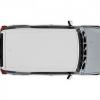FASTER THAN R50 V10 TWIN TURBO VW TOE RAG! (AWD KX-S Kluger) 7.10 seconds 0-100kph (+ FJ Cruiser) 6.84 seconds 0-100kph V6=Don Mega!!!!

By
RICE RACING
in Kluger
-
Latest Postings
-
4
2010 AURION PRESARA - RELACEMENT OF FAULTY AUDIO SYSTEM.
Where can you buy this from and how much? -
1
Aurion "wobble"
Since last year I've been getting quite terrible wheel wobble between 60-70 mph on the expressway. Sort of notice it however way less evident now and again going more slow. Recently got crankshaft belt and flash fittings changed at a repairman I believe that accomplishes great work. This began occurring after I got excessively blissful doing doughnuts in the colder time of year and knock a snow bank tapping a road sign haha... I figured I twisted something in the driver side suspension...lower control arm, tie bar, and so on yet repairman said everything was straight and tight, bushings alright, no spillage on them or swaggers. He said perhaps a wheel arrangement would fix it. I maintain that should do swaggers in any case cause the ride isn't quite as smooth as it used to be. Contemplations? Assuming I get an arrangement would it be advisable for me to do the swaggers first or is that all the more with supplanting the lower control arm? -
54
Oil Pipe Leak
I'd be surprised if they expect you to pay for it as it is a recall issue. Glad it's been checked out before it's too late though. -
0
Fusible link has blown out twice
Any one had any experience with fusible links blowing out. Auto electrician replaced one fusible link today bc and after driving it for 1/2 hour the plastic has melted and the link red hot. It is the blue link in the set. Any suggestion? -
0
Hilux 2008 4x4- manual jumping out of 1st gear
Hi just wondering if anyone would know why my gearbox is jumping out of 1st gear, it engages into first but before I can change to 2nd gear it sometimes jumps back to neutral. -
54
Oil Pipe Leak
I just had my Aurion ATX 2010 in for service today and received a call regarding oil cooling pipe has a prick hole and car is deemed not safe to drive till replaced. Service department bloke said they are taking photos and sending of for Warranty and awaiting a reply if it will be replaced at their cost or mine. I was informed it was picked up during service in 2020 and deemed safe? I will keep you updated on the outcome. my car has always been serviced at Toyota and only has 209,900 Kim’s -
0
Thinking to get Yaris, what to look out for?
I am thinking of getting Yaris but unsure what to look out for ie what’s generally fails in Yaris etc. What mode is a better build etc. I have zero car knowledge so any advice is greatly appreciated. thank you kindly -
0
Swapping hiace motors
Hi there, bit of background, I’ve got a 2003 Toyota hiace lwb that has a good motor but the shell is dead, and a 1993 Toyota hiace commuter extra long wheel base that has a dead motor. Both diesel, 1993 is 2.4L engine, 2003 I’m not 100% but I believe it’s also a 2.4L engine So my question is does anybody know if the 2003 motor would fit in the 1993 hiace commuter. -
0
How much oil does my engine take?
Need to change my oil but don't know how much oil to put back into engine? Tarago 1998 GLI -
0
Brake issues with 2024 Corolla Cross Hybrid
Hi all, trying to get some opinion/feedback on what I recently observed on my Corolla Cross. It happened on the last two trips where the car made noise, I feel some vibration/rattling when I was braking. It lasts for 1 or 2 seconds. I kind of felt the tires skid but I am not sure if that's what actually happened. And I, again kind of, felt that it was the right side tires. Or at least the noise coming from the right side. But it could be just because I was driving and obviously sit on the right side of the car. In those 2 trips, it happened in 4 occasions. And it wasn't abrupt or hard braking, just normal slowing down. I wonder if this is a known issues ... or if anyone with the same car experience the same or similar issues. Thank you.
-


Recommended Posts
Join the conversation
You can post now and register later. If you have an account, sign in now to post with your account.